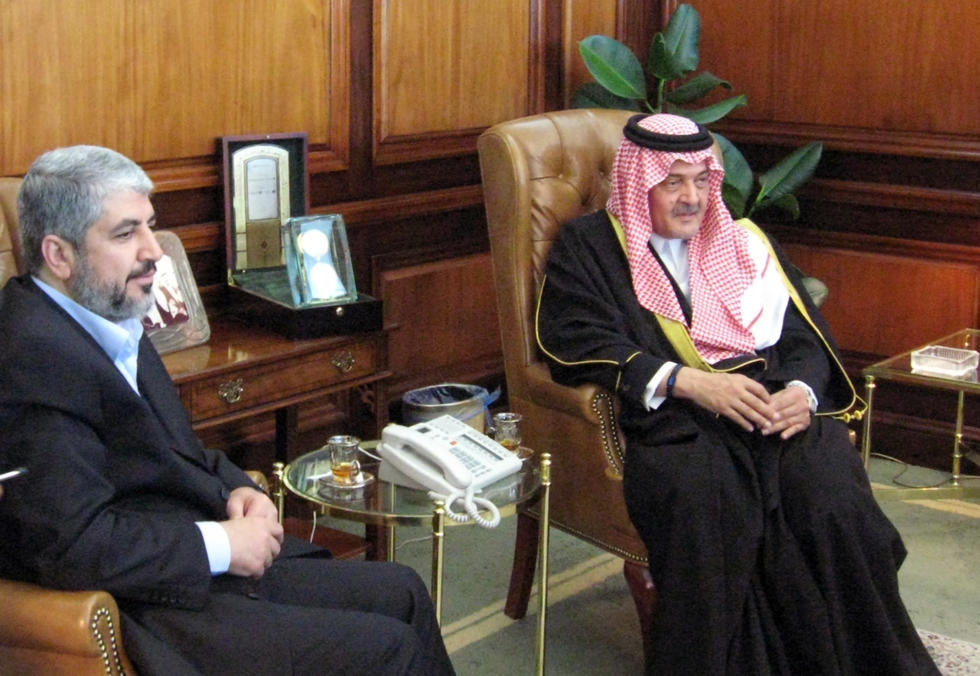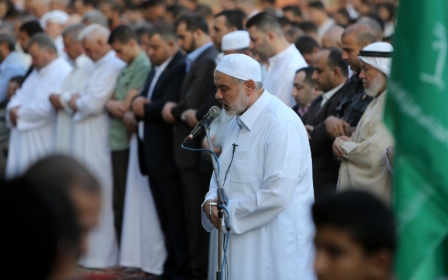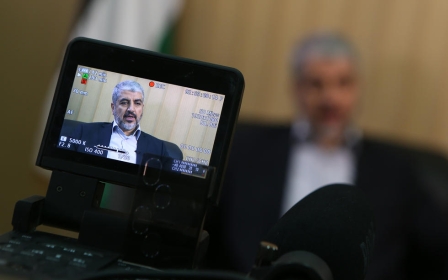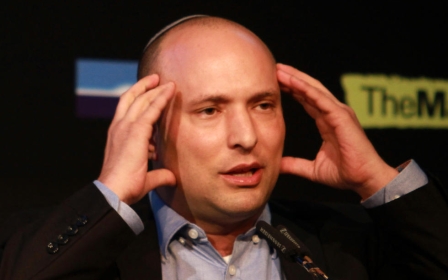Iran nuclear deal poses crucial dilemma for Hamas

The lifting of wide-ranging sanctions as part of the Iran nuclear deal will enable Tehran to enhance its regional footprint, with much of the immediate focus on the repercussions for Syria, Iraq, Lebanon, Yemen and the Gulf. Palestine, by contrast, has received relatively less attention, even though the nuclear deal could significantly impact its domestic dynamics as well as the conflict with Israel.
In this regard, Hamas has the most to gain or lose, depending on how it plays its cards. Already there are signs that the Palestinian faction could be the subject of a tug of war between arch foes and regional powerhouses Iran and Saudi Arabia. Which way Hamas goes will have major and potentially long-term implications for its domestic and regional standing.
There have been reports of a thawing of relations between former allies Hamas and Tehran since late 2013. This followed the cutting of vital Iranian funding - reportedly worth some $23 million a month - in 2012 due to Hamas’s refusal to side with President Bashar al-Assad, a key regional ally of Tehran, in the Syrian conflict.
The thaw began with high-level meetings in Iran, Turkey and Qatar from late 2013, leading a senior Hamas official to state in January 2014 that bilateral relations “are now almost back to how they were before” the Syrian war.
Hamas’s ties with Tehran and with the latter’s Lebanese ally Hezbollah - which also distanced itself from the Palestinian faction over Syria – improved further during and after last summer’s devastating Israeli onslaught against Gaza, which is governed by Hamas.
Iran-Hamas ties snagged on Syria
In April this year, there were reports - albeit based on anonymous sources - that Iran had allocated millions of dollars to Hamas’s military wing, and in recent months the movement has reiterated its interest in resuming close ties.
However, the rapprochement has hit three significant snags. Firstly, there is no sign of a Hamas U-turn vis-à-vis Assad - as reportedly sought by Tehran - and Assad himself said in April: “I don’t think the Syrian people will trust [Hamas] anymore.”
Secondly, the faction’s political and military wings are reportedly resisting another Iranian condition: the resignation of its leader Khaled Meshaal. Thirdly, in March Hamas expressed its support for Yemeni President Abd Rabbuh Mansur Hadi, whose Houthi opponents are backed by Tehran.
These obstacles may have spurred a rare meeting on 16 July between top Hamas and Saudi officials in Riyadh, including Hamas leader Khaled Meshaal and King Salman. Coming just two days after the signing of the nuclear deal, this could signal a pre-emptive attempt by Riyadh to pry Hamas away from Tehran’s sphere of influence.
Relations between Hamas and Riyadh have reportedly improved since the succession to the throne of Salman – who has been more aggressive toward Tehran and its allies than his late predecessor.
Which way to go - Riyadh or Tehran?
Hamas has two choices, both risky but potentially lucrative: either publicly side with one of the two rival camps, or attempt to balance itself between the two. The first approach may result in wholehearted support from one side but the wrath of the other. The second approach may bring a measure of support, but also suspicion and distance, from both camps. It is a difficult but pivotal dilemma for Hamas.
Warming further to Tehran risks not only antagonising Riyadh but also the latter’s numerous regional allies, including the wealthy Gulf states and Palestine’s geo-strategically important neighbours Egypt and Jordan. It could also jeopardise ties with Hamas’s key backers Turkey and Qatar, both of which have expressed concerns about the potential for Iranian regional hegemony following the nuclear deal.
Veering toward Riyadh could encourage much-needed financial support from the Gulf states. They may also lean on Egypt’s government – which owes a lot to Gulf backing – to ease its blockade of Gaza and its hostility toward Hamas.
Salman may be less susceptible to US pressure to shun Hamas, given his attempts to formulate a more independent foreign policy amid public grievances over the nuclear deal, lukewarm American support for Syrian rebels, and Washington’s willingness to cooperate with Tehran in Iraq.
Saudi support could also bolster Hamas’s position in its rivalry with the Fatah-dominated Palestinian Authority (PA). Though the PA will no doubt be upset by such a relationship – in April, an aide to PA President Mahmoud Abbas urged Riyadh to “attack” Hamas “with an iron hand” - it has no leverage over the kingdom.
Iran support for resistance
However, the lifting of sanctions holds the prospect of a vastly wealthier Iran and thus greater financial aid to Hamas, as well as more military support from Tehran and Hezbollah. Riyadh and its allies would need to make up for this if they are to woo Hamas – they are able to do so financially, but military backing is highly unlikely.
“In terms of logistics and training, Iran has done more than any other country in supporting the resistance,” Hamas official Ahmad Yusef said in March. Given Hamas’s conflict with Israel, the depletion of its military strength from last year’s war, its rivalry with the PA, challenges to its authority from jihadists in Gaza, and its need to govern the territory and maintain the ceasefire with Israel, the faction needs military as well as financial support.
Saudi Arabia and Iran both benefit from improved ties with Hamas in terms of validating their self-proclaimed championship of the Palestinian cause, a status their respective opponents have increasingly questioned in recent years. This would deflect criticism of Riyadh for being seen as too closely aligned with Israel, particularly over Iran, and it would deflect criticism of Tehran for shunning Hamas over Syria.
From Iran’s point of view, the return of the only Palestinian element of the self-proclaimed “axis of resistance” - comprising Tehran, Assad, Hezbollah and formerly Hamas – would boost the credibility of the group’s title.
From the point of view of Hezbollah, which is mired in the Syrian conflict in support of a beleaguered Assad, it would not hurt to have a strengthened ally in Hamas in case of renewed conflict with Israel.
The nuclear deal presents an opportunity - perhaps even a renaissance - for Hamas if both camps court it, particularly given its regional isolation in recent years, and the myriad challenges it is facing at home.
However, this very courtship highlights a weakness: that it needs outside support, and is thus vulnerable to the Middle East’s constantly shifting tectonic plates. This could cause internal divisions over the tough decisions it faces at a critical juncture in its existence.
- Sharif Nashashibi is an award-winning journalist and analyst on Arab affairs. He is a regular contributor to Al Arabiya News, Al Jazeera English, The National, and The Middle East magazine. In 2008, he received an award from the International Media Council "for both facilitating and producing consistently balanced reporting" on the Middle East.
The views expressed in this article belong to the author and do not necessarily reflect the editorial policy of Middle East Eye.
Photo: Hamas's exiled leader Khaled Meshaal (L) holds a joint press conference with then Saudi Foreign Minister Prince Saud al-Faisal following a meeting in Riyadh on Januray 3, 2010. (AFP)
New MEE newsletter: Jerusalem Dispatch
Sign up to get the latest insights and analysis on Israel-Palestine, alongside Turkey Unpacked and other MEE newsletters
Middle East Eye delivers independent and unrivalled coverage and analysis of the Middle East, North Africa and beyond. To learn more about republishing this content and the associated fees, please fill out this form. More about MEE can be found here.





